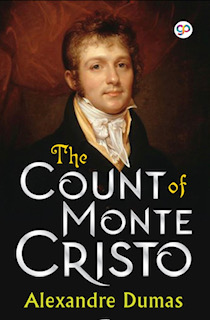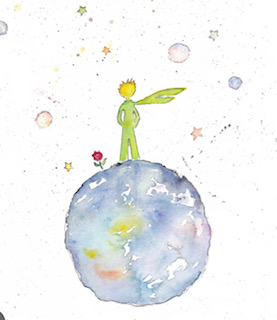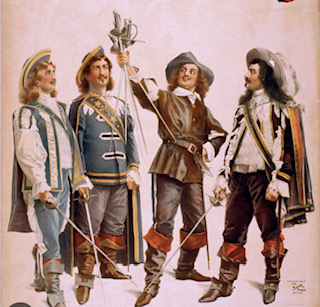
„Incredibilii” este un film animat pe computer cu super-eroi produs de Pixar și lansat de Walt Disney Company în 2004. Filmul este plasat într-o versiune retro-futuristă a anilor ’60, în care super-eroii sunt scoși în afara legii de către guvern după ce se confruntă cu reacții publice și procese pentru daunele colaterale pe care le provoacă.
Filmul urmărește în primul rând familia Parr, o familie de foști super-eroi care încearcă să trăiască o viață normală suburbană. Bob Parr, cunoscut și sub numele de Dl. Incredibil, este tatăl familiei. Odată a avut o forță incredibilă și abilitatea de a rezista la daune mari. Soția lui, Helen Parr, sau Elastigirl, are puterea de a-și întinde și contorsiona corpul în diferite moduri. Împreună, au trei copii cu propriile lor puteri unice: Violet, care poate crea câmpuri de forță și poate deveni invizibilă; Dash, care posedă super-viteză, și copilașul Jack-Jack, ale cărui puteri nu au fost încă dezvăluite.
Bob este nemulțumit de viața lui mondenă și își retrăiește în secret zilele de super-erou, săvârșind fapte eroice în secret. El este contactat de o femeie misterioasă pe nume Mirage, care lucrează pentru o organizație secretă care angajează super-eroi pentru misiuni secrete. Bob acceptă oferta și călătorește pe o insulă îndepărtată, unde se luptă cu un robot uriaș. El nu știe că organizația este de fapt condusă de fostul său fan Buddy Pine, care a devenit un super-răufăcător numit Syndrome. Planul lui Syndrome este să-i omoare pe toți super-eroii și apoi să-și folosească invențiile pentru a pretinde că este el însuși un super-erou, înainte de a-și vinde tehnologia publicului și de a face pe toată lumea super-eroi.
Activitățile secrete ale lui Bob sunt descoperite de Helen, care merge după el pe insulă cu ajutorul unui designer de costume de super-eroi pe nume Edna Mode. Helen și copiii își unesc forțele cu Bob pentru a opri pe Syndrome și armata sa. Acolo se întâlnesc cu un alt prieten super-erou cunoscut sub numele de Frozone, care poate crea gheață din umezeală.
„Incredibilii” nu este doar un film cu super-eroi plin de acțiune; de asemenea analizează dinamica familiei, deoarece fiecare membru al familiei Parr învață să-și îmbrățișeze individualitatea și să lucreze împreună ca o echipă.
Filmul este cunoscut pentru hazul, umorul și momentele de familie pline de căldură. Acesta explorează teme de identitate, importanța familiei și ideea că a fi diferit poate fi o sursă de forță. Rămâne un clasic îndrăgit în lumea cinematografiei de animație, atrăgând publicul de toate vârstele.
In English:
The Incredibles is a computer-animated superhero film produced by Pixar and released by Walt Disney in 2004. The film is set in a retro-futuristic version of the 1960s where superheroes are outlawed by to the government after facing public backlash and lawsuits for the collateral damage it causes.
The film primarily follows the Parr family, a family of former superheroes trying to live a normal suburban life. Bob Parr, also known as Mr. Incredible, is the father of the family. He once had incredible strength and the ability to withstand great damage. His wife, Helen Parr, or Elastigirl, has the power to stretch and contort her body in various ways. Together, they have three children with their own unique powers: Violet, who can create force fields and become invisible; Dash, who possesses super speed, and the child Jack-Jack, whose powers have yet to be revealed.
Bob is dissatisfied with his mundane life and secretly relives his superhero days, performing heroic deeds in secret. He is contacted by a mysterious woman named Mirage, who works for a secret organization that hires superheroes for covert missions. Bob accepts the offer and travels to a remote island where he battles a giant robot. Little does he know that the organization is actually run by his former fan Buddy Pine, who has become a super-villain named Syndrome. Syndrome’s plan is to kill all the superheroes and then use his inventions to pretend to be a superhero himself, before selling his technology to the public and making everyone a superhero .
Bob’s secret activities are discovered by Helen, who follows him to the island with the help of a superhero costume designer named Edna Mode. Helen and the kids join forces with Bob to stop Syndrome and his army. There they meet another superhero friend known as Frozone, who can create ice from moisture.
The Incredibles isn’t just an action-packed superhero movie; it also explores family dynamics as each member of the Parr family learns to embrace their individuality and work together as a team.
The film is known for laughter, humor and heartwarming family moments. It explores themes of identity, the importance of family and the idea that being different can be a source of strength. It remains a beloved classic in the world of animated cinema, appealing to audiences of all ages.









